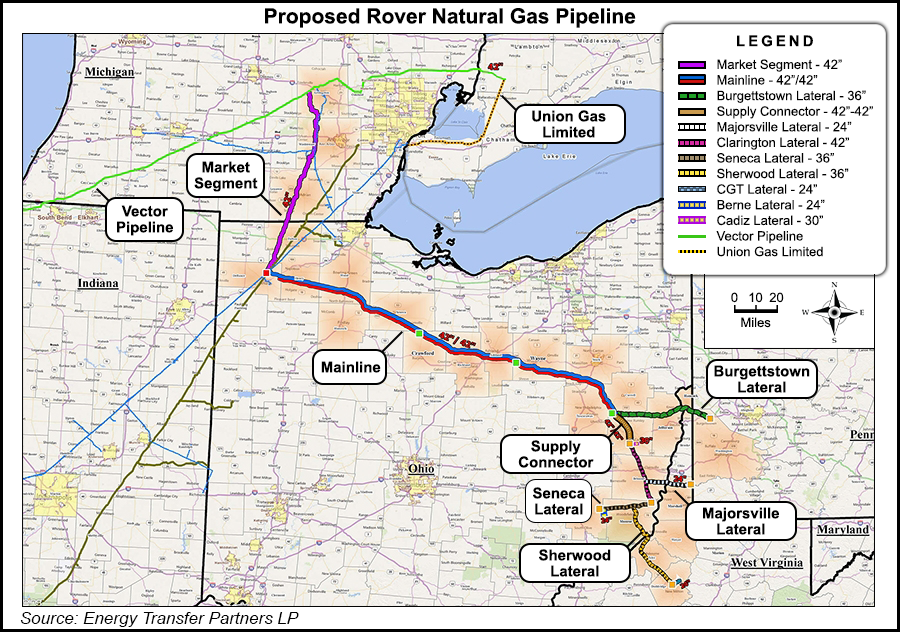Utica Shale | E&P | Marcellus | NGI All News Access | Regulatory
Rover Gets Final EIS, Now Awaits FERC Decision
FERC released the final environmental impact statement (EIS) Friday for the Rover Pipeline Project, bringing the major Appalachian takeaway pipe one step closer to construction.

The EIS, prepared by Federal Energy Regulatory Commission staff with help from cooperating state and federal regulatory agencies, also covered the Panhandle Backhaul Project and the Trunkline Backhaul Project, two brownfield expansions planned by Panhandle Eastern Pipe Line Co. LP and Trunkline Gas Co. LLC respectively.
Echoing the draft EIS published in February (see Daily GPI, Feb. 19), FERC staff concluded that constructing and operating the projects “would result in limited adverse environmental impacts, with the exception of impacts on forested land.”
FERC said the impacts “would be reduced to acceptable levels with the implementation of Rover’s, Panhandle’s, and Trunkline’s proposed mitigation and the additional measures recommended by staff in the final EIS.”
The Commission will consider the EIS when it makes the final decision on whether to approve construction of the Rover project.
The 700-mile Rover, backed by Energy Transfer Partners LP (ETP), would run through parts of West Virginia, Pennsylvania, Ohio and Michigan, delivering 3.25 Bcf/d from Appalachia to the Midwest and Canada. ETP has delayed the pipeline’s target in-service date to 2017 after requesting an expedited review last year (see Daily GPI, Nov. 9, 2015).
Rover’s east-to-west route is similar to the 1.5 Bcf/d Nexus Gas Transmission LLC pipeline, which is currently under development by Spectra Energy Corp. and DTE Energy Co. Nexus received a favorable draft EIS from FERC earlier this month (see Shale Daily, July 11).
In response to questions raised by FERC, backers of the Rover project recently made plans to co-locate with Columbia Pipeline Group’s Leach XPress pipeline for a 13-mile stretch in Eastern Ohio (see Shale Daily, July 6).
The Rover project is one of numerous proposed pipelines aimed at relieving the glutted Marcellus and Utica shale producing regions in Pennsylvania, Ohio and West Virginia. But some have openly wondered whether the current slate of projects has the Appalachian Basin on pace for a pipeline overbuild (see Shale Daily, June 8).
The Panhandle Backhaul Project would involve modifications at four existing compressor stations and three valve site locations, allowing for bi-directional flow through the Panhandle system and establishing a Panhandle-Rover Interconnect near Defiance, OH.
The Trunkline Backhaul Project would involve various modifications to allow bi-directional flow on Trunkline’s system. It would also include modifications to its existing interconnect with Panhandle.
© 2024 Natural Gas Intelligence. All rights reserved.
ISSN © 2577-9877 | ISSN © 2158-8023 |
